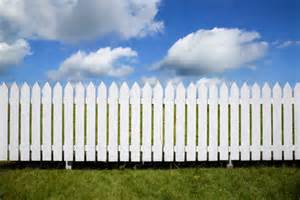
24 Feb Good Fences Make Good…Family
“Good fences make good neighbors.”
I was a teenager and had no idea what Dad was talking about, so he explained:
There are plenty of opportunities for neighbors, even very good people, to get into conflict with one another. Well-built, well-maintained fences help to reduce many of those conflicts by keeping our business (pets, livestock, children, etc.) on our side of the fence and their business on their side.
While I didn’t necessarily appreciate that wisdom at that time, 27 years of counseling have certainly helped me to do so. I suppose that an attorney or city councilman would focus on the implications for property owners. As a Marriage and Family Therapist I am more mindful of the implications and applications for family members. Couples would be wise to keep their business (conflicts, frustrations, parenting differences, etc.) between themselves and not share them with others, including their own parents.
One of the most pressing tasks for a young couple, engaged to be married, is to place and maintain proper boundaries—fences—between themselves and their respective parents. Of course this is much easier if they have been laying out “property lines” and digging post holes during adolescence and early adulthood. But it is never to too late to start establishing those boundaries that help to protect the new marriage from encroachment.
Spencer W. Kimball, twelfth President of the Church of Jesus Christ of Latter-day Saints, famously said that it would be better for a young couple to live in a tent than to move in with parents after the wedding. While there certainly are exceptions (February in Idaho, for example) his advice for young couples to become independent from others—and mutually dependent upon one another—is very wise.
It is tough enough for young wives and husbands to learn to work together without unnecessary complications with respective families. While I might understand, tolerate, even appreciate my parents’ influence or invasions in my privacy or decisions, I can be certain that my spouse will not feel the same. There is a reason that comedians resort to mother-in-law jokes, and that the terms “in-laws” and “out-laws” are so similar.
Young couples can begin by discussing with their respective parents what they hope the boundaries to be—the topics and tasks that they hope to share and those they do not. This gives both parties the chance to be clear about how their roles will change and the reasons for doing so. We old folks sometimes don’t understand how or why things are changing without being clear about what you have in mind.
My father practiced what he preached. Though Ruth and I only lived about 120 yards from my parents for the first three months of marriage, my parents only came over twice, both times after being invited to do so. When I asked why they didn’t just drop by once in a while—something with which both Ruth and I would have been okay—Dad explained that he appreciated the need for young couples to have their own space. He had observed that many parents continue to interact with their adult children as if they were children and didn’t make it easy for the new couple to be the “main event” in the new family they are creating.
I told him that I didn’t mind if he came over any time; he was my father, after all. He smiled and said that my new wife might not always feel that same way, and that he would prefer stay on his side of the fence until we both invited him and my mother over.
Again, I didn’t really appreciate the wisdom of those observations until my own family was growing and we were working through our own challenges a thousand miles away from our nearest relatives. Ruth and I had leaned upon one another early on so we were able to stand with very little assistance from the outside.
Another word about fences and boundaries around the young couple: The white picket fence is an ideal model for marital boundaries. It is easy to see, friendly, and transparent. There is no razor wire across the top, nor gun turrets at the corners. And there is a gate in the front, signaling to all where to enter when appropriate.
At the same time, picket fences are designed to induce discomfort when one tries to straddle them.
